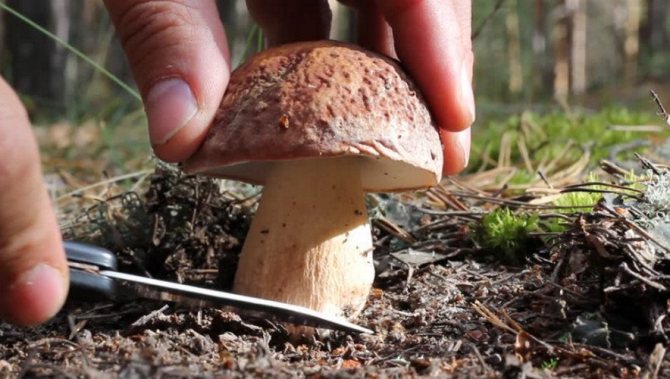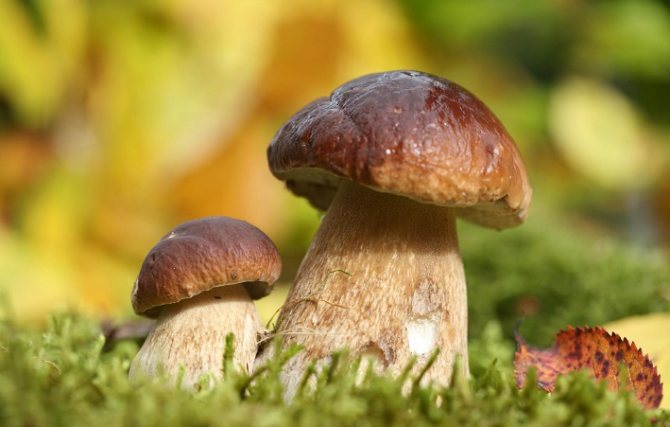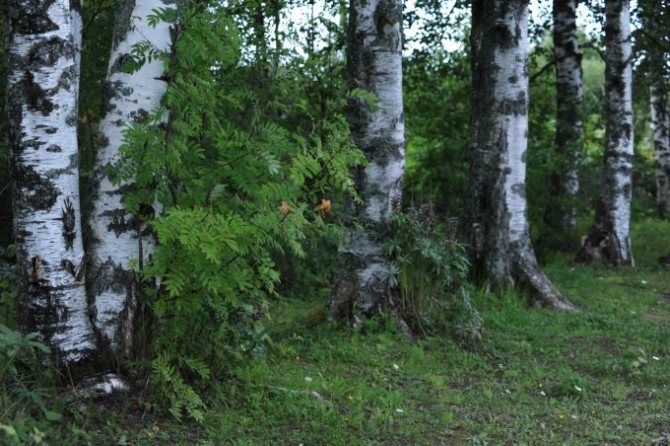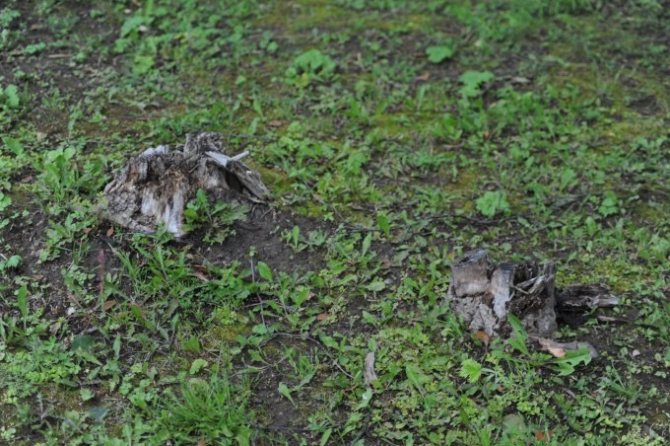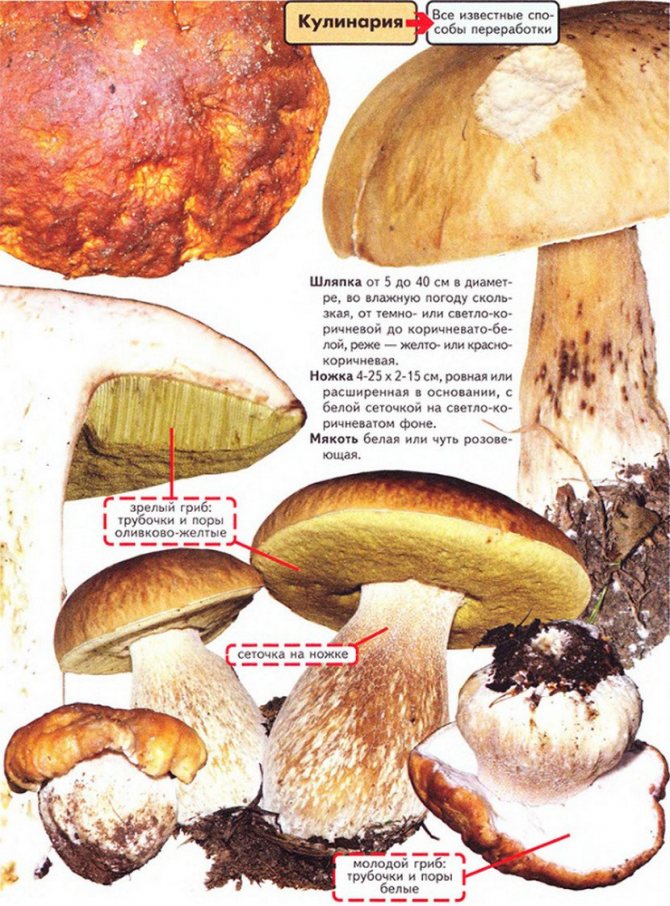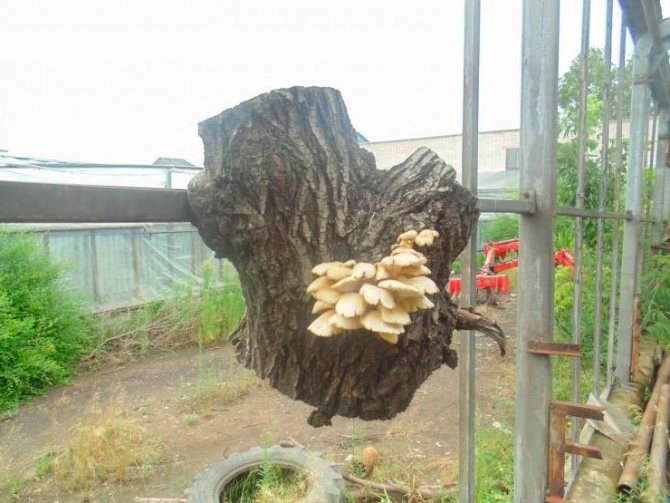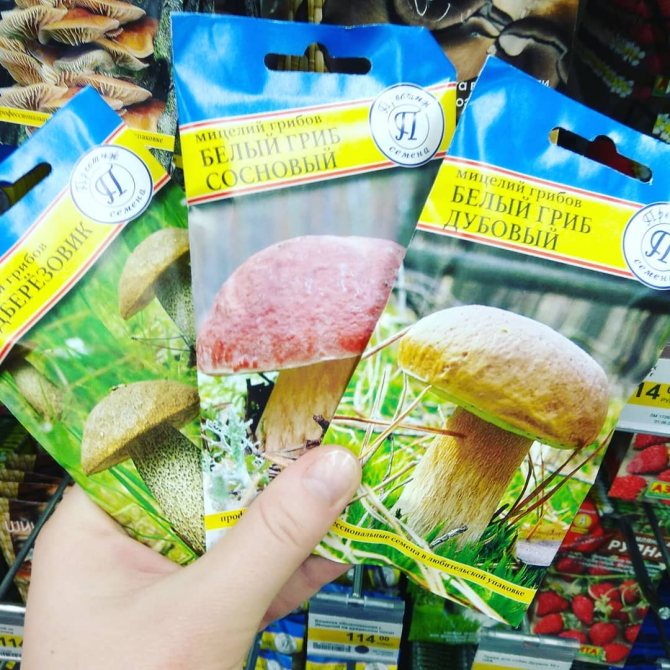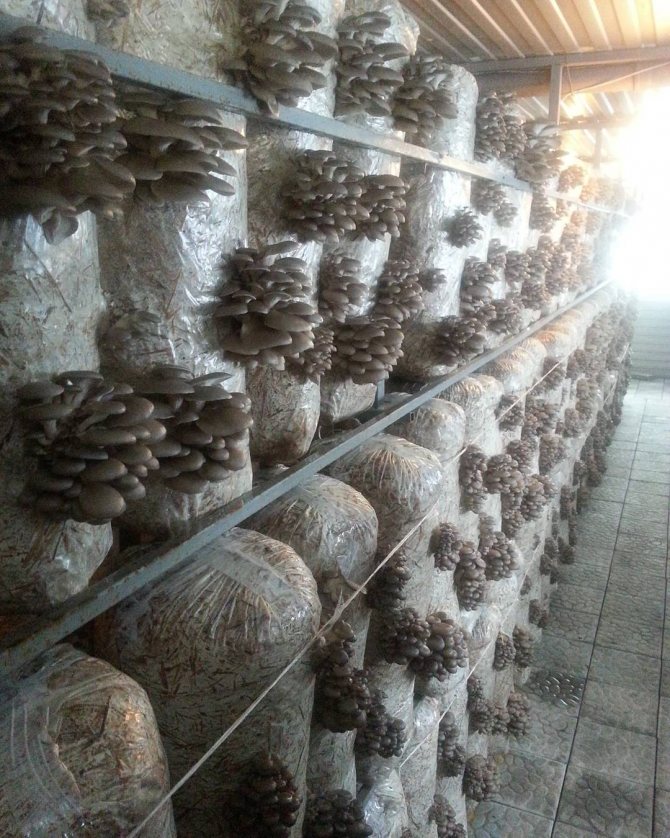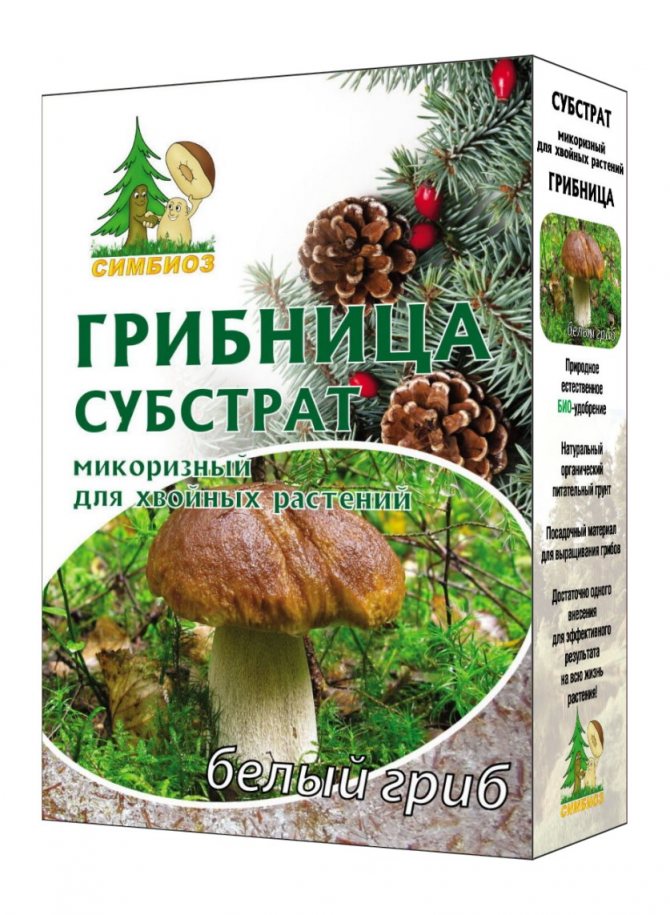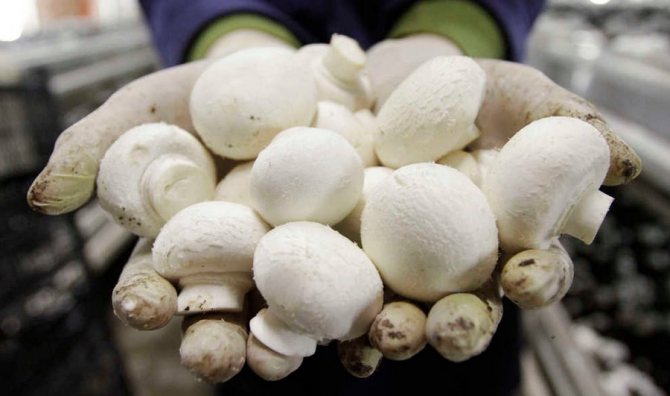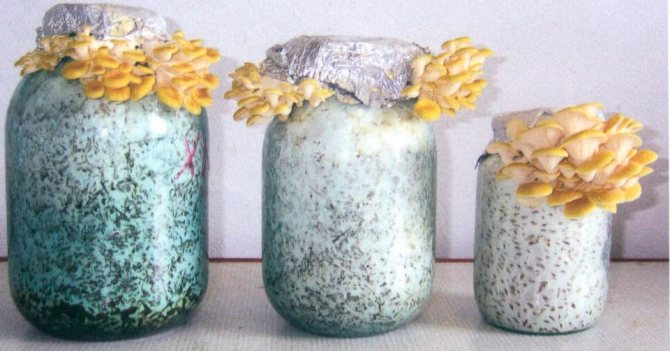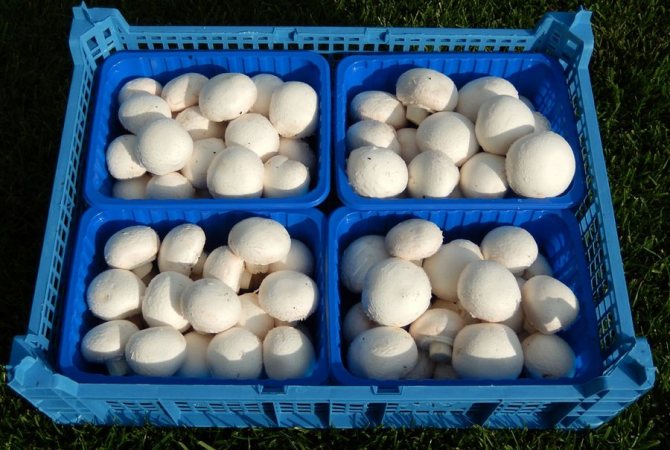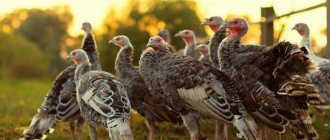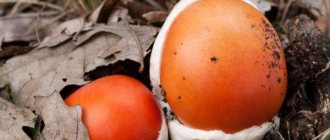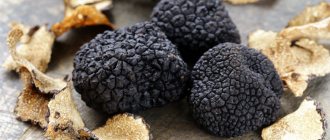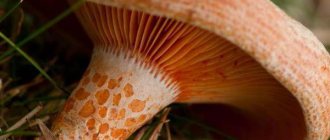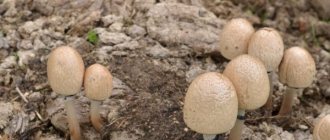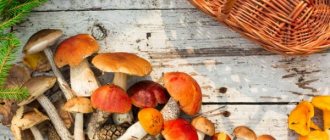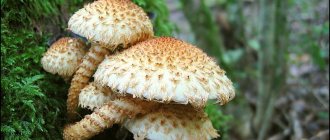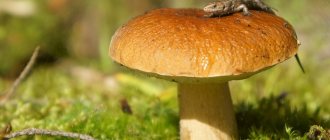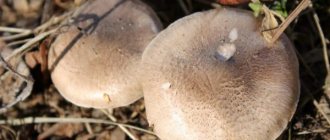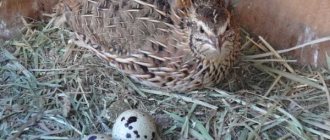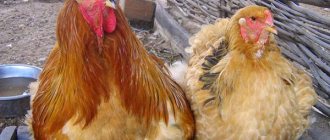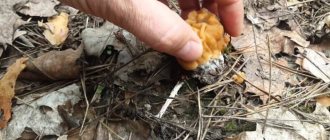Encyclopedia "Mushroom-Info" Handbook of a mushroom picker Growing conditions of porcini mushrooms: time, place and temperature
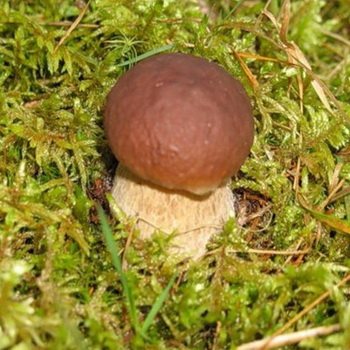
For lovers of "quiet hunting" autumn is the very time when it is time to go to the forest for mushrooms. Although they begin to grow already in spring, the most popular is the autumn mushroom, namely the white one.
The conditions for the growth of porcini mushrooms have their own specific nuances. Therefore, going to the forest, every mushroom picker should know what kind of weather these fruit bodies love and what temperature they prefer most.
Note that the mycelium of porcini mushrooms grows from early spring to late autumn. The growth of the porcini mushroom depends on a constant flow of air, humidity and a certain temperature. The mycelium penetrates the topsoil to a depth of 15 cm.If drought or excessive moisture lasts for a long time in the places where the porcini mushroom grows, as well as soil compaction or early frosts, the fruit bodies develop very poorly and the mycelium dehydrates. Therefore, for good growth of mushrooms, air humidity and warmth are needed, especially in the surface layers.
How fast do mushrooms grow?
How fast does a mushroom grow? The question of how much boletus grows can be answered as follows: mushrooms generally grow faster than many plants that a person usually eats. In one or two days, it grows from being invisible to mushroom pickers to a decent size. Caps grow especially quickly. How long does a porcini mushroom grow? Quite quickly under favorable conditions. And aspen mushrooms with boletus boletus almost do not lag behind the boletus. But on average, most mushrooms grow large in 3 to 6 days.
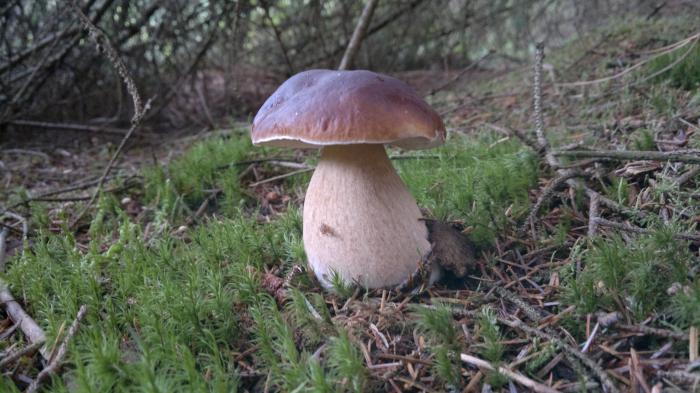

How fast does a mushroom grow? If conditions are favorable, then even after one night it is already possible to collect boletus and russula. But this is about those mushrooms that are already on the surface. Their main growth still takes place underground. The rapid appearance on the surface is influenced by rain and sun. The growth rate is still greater at night than during the day. For example, you can find out how much a porcini mushroom grows by simply measuring a small young fungus in the mycelium, and measure it every day. Usually, they fully grow in two days.
The very first boletus, aspen, boletus, white and many others can be found near large trees or not far from them, where there are fewer small and young roots. And in young forests, they practically cannot be found at this time. Only closer to August will mushrooms begin to grow evenly over all the massifs. At the end of the mushroom season, they again begin to occur most often in old forests. True, there is an exception - boletus and mushrooms. They prefer more young shoots and forest edges.
Preparation of planting material
Before starting the growing process, it is worth getting acquainted with the basic concepts of the physiology of fungi and the methods of their reproduction. Mushrooms have mycelium - this is the part of the fungal organism that is not visible on the surface.... Like the roots of a tree, the mycelium provides nutrition and is necessary for the growth of the mushroom structure. They are long, thin, thread-like formations that spread beneath the surface of the earth.
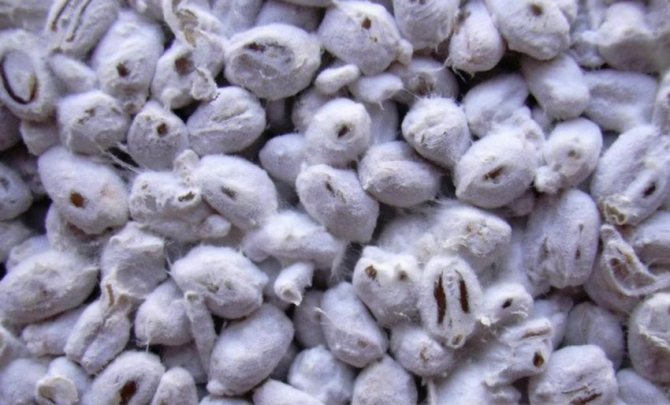

Mushrooms reproduce by spores (translated from Greek - "seed"), which ripen under the cap and, getting into the soil, germinate into a monokaryotic mycelium. Monokaryotic means that the chromosomes of the mycelium are unpaired. To grow fruiting bodies and create a full-fledged organism, two monokaryotic mycelium combine, turning into a dikaryotic one, which produces mushrooms on the surface of the earth. It spreads over large areas, which is why fungi are considered the largest organisms on the planet.
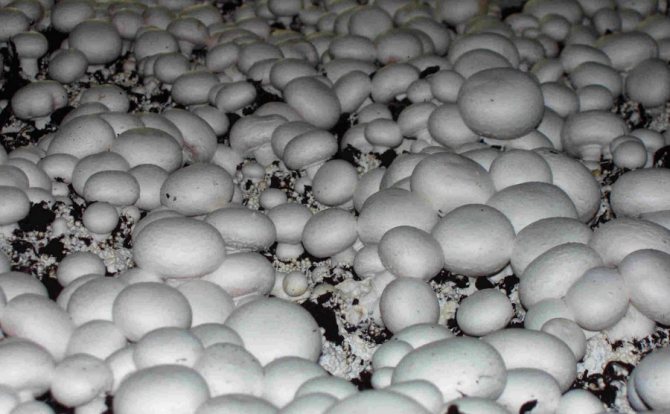

Often, forest mushrooms grow in close connection with trees and form mycorrhiza, but champignons are an exception, and therefore they can be grown in the garden.
The main requirements for growing mushrooms in garden plots are:
- creating the right conditions close to natural;
- acquisition or creation of mushroom planting material, which is used for the propagation of mushrooms.
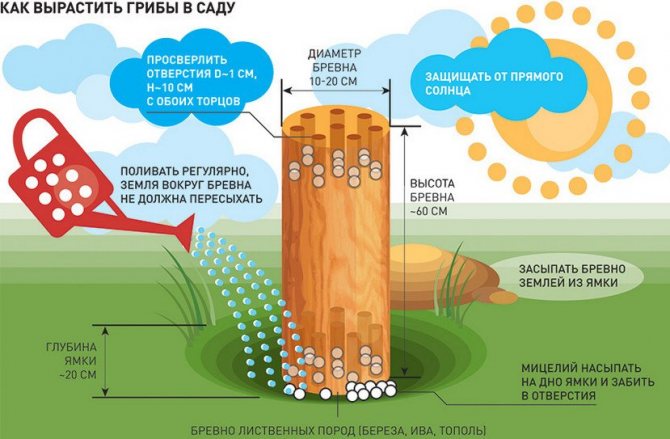

Choice in store
Champignons are a common form of mushroom growing. Planting material can be purchased in the form of ready-made kits through online stores or local nurseries. The kits usually contain all the materials needed to plant and grow mushrooms, they are environmentally friendly, ready to use, and great for beginners.
Important! Kits for growing, as a rule, have certain directions (types of mushrooms, requirements for conditions, composition of the kit), which may differ from traditional methods of mushroom farming. Be sure to read the package description carefully and follow the instructions.
This includes:
- compost bag, seeded with mushroom mycelium;
- a package with a casing layer;
- trays;
- instruction.
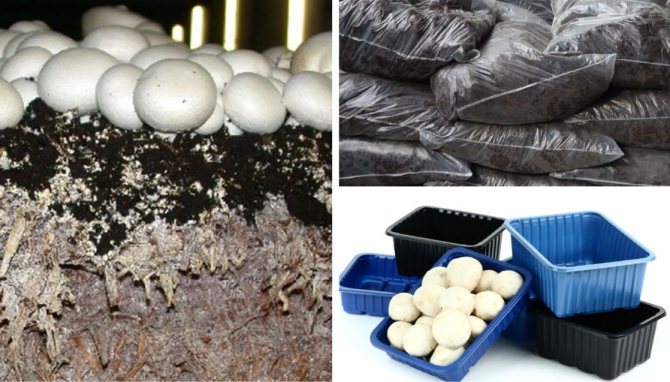

Grow it yourself
Growing mycelium on your own at home is more difficult. This will require knowledge of microbiology. It is possible to make sure that everything is done correctly and that the mycelium of the champignon is grown, and not another microbiological culture, is possible only after the appearance of the fruiting bodies. The process must take place under sterile conditions, in the presence of a nutrient medium, special equipment, in certain temperature conditions, which are easier to create in a laboratory than in a kitchen.
Did you know? Previously, mushrooms belonged to plants and were studied by botanical sciences. Now there is a separate section of biology - mycology: this is the science of fungi and mushroom-like organisms.
There is another way to grow mycelium directly in the garden:
- To do this, you need to sketch in a selected area among the grass waste from cleaning and processing or fresh ripe mushrooms with open caps and dark cap plates.
- Then you should cover the place with old boards, fallen leaves or branches, trying to avoid excess moisture.
- Ripe spores will fall into the ground and give rise to mycelium growth, which will spread underground and create a productive mycelium.
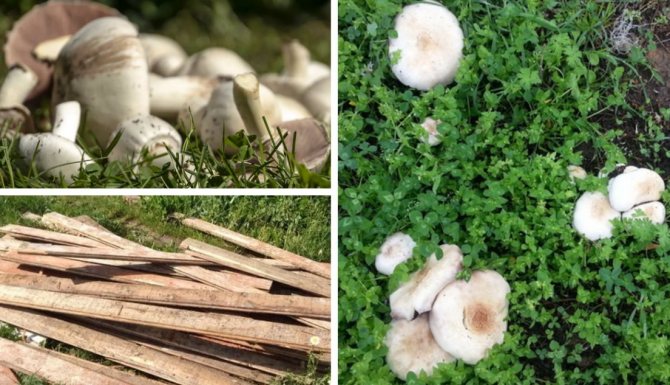

With this method, in case of successful reproduction, you will receive the mycelium of the champignons. Growing mycelium on your own is a long and painstaking process that is fraught with failures, so you can do this in terms of research and experiments, and for growing on a garden plot, it is better to purchase ready-made planting material.
How does porcini mushroom grow?
They grow all summer, but in "waves". Spikelets are their first species that appears. In order to be sure that whites can be found, you can go out on a quiet hunt at the end of June. The second wave starts from about mid-August to September. This time is considered the most productive. But it can be very short, maybe even a week. But the third "wave" largely depends on the autumn weather. In October, even on a frosty morning, you can find late boletus.
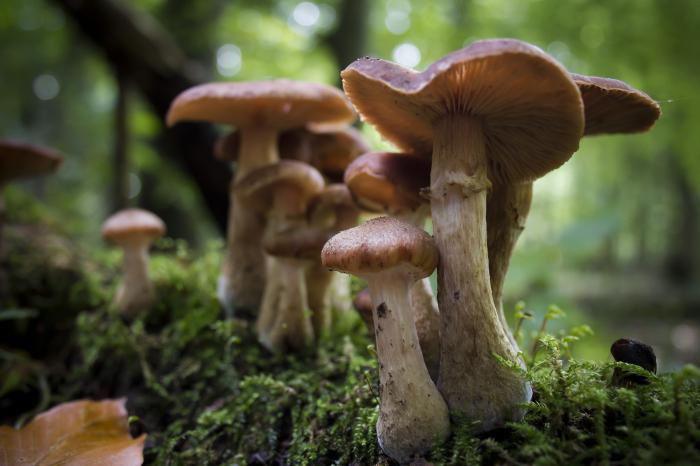

Porcini mushrooms do not like loneliness, they grow right in several pieces at once.Therefore, if one is found, then the rest are nearby. Also, they can often be found in the vicinity of fly agarics, which appear simultaneously with them. How fast does a white mushroom grow? Not very fast, up to 7 days.
Signs
In general, our conversation began with the fact that last year the most superstitious mushroom lovers did not go after them, and now they are in anticipation. And I, as the youngest mushroom picker, became interested in why it is impossible to pick mushrooms in a leap year? I was told several versions, I will tell you the most memorable ones:
- Mystical version
: in the old days, people believed that if you pick mushrooms in a leap year, the spirit of the forest will take revenge and people will begin to die in the village. Naturally, there is no reliable information on this matter. - Random:
there is an opinion that the mycelium becomes poisonous every few years and releases, together with the mushrooms, all the accumulated harmful substances. I don't know how much truth is in this, but I am personally touched by the mycelium schedule, which coincides with leap years. - Rational version
: mycelium is a large organism that needs nutrition and fertilization, so it is not recommended to collect mushrooms every few years - you need to give the myceliums the opportunity to recover. Therefore, knowledgeable people either change their mushroom spots from year to year, or simply take a break in a leap year.
The rest of the signs are less mystical and more grounded. For example, in Siberia they say that when midges fly, you should cook baskets
- the season of activity of the midge coincides with the mushroom season.
And in the Volga region, I often hear the words “Like a white mushroom, so everyone is brave
”- it means that an inexperienced mushroom picker will only pick up porcini mushrooms, and an experienced one will come with a full basket anywhere - because he knows the local mushrooms.
False porcini mushrooms
False mushrooms in the forest are always very similar to edible ones in appearance. But this is only at first glance. You can still distinguish them if you look closely. The white false has the same massive leg, and its base is the same - in the form of a barrel. In order to distinguish poisonous from good, they look directly at the fruiting body. In a false, the pulp on the cut will turn pink. But cut on white - no. In addition, the poisonous one has a small pattern - like a mesh - on the top of the leg. And whites just don't have it at all. Unfortunately, it is this mesh that often misleads mushroom pickers, who mistakenly mistake a false white for a boletus. In a poisonous fungus, the tubular layer has a pinkish or off-white tint. Well, the easiest way is to taste it. False mushrooms give off bitterness. Even just licking a piece, you can immediately feel it. And with subsequent heat treatment, it is further enhanced.
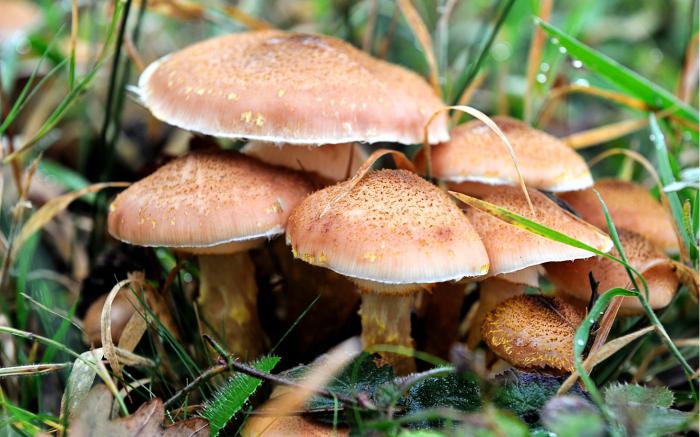

Features of the growth and development of fungi
Most mushrooms grow in two weeks
... During this short period, the mushroom manages to reach standard sizes, but often the growth stops already on the fifth day. Curiously, the diameter of the fruiting body continues to increase even after the cessation of upward growth. Looking at the mushroom, you can decide that its cap grows the longest, and it really is.
Its development most actively occurs after the end of the growth period of the leg, the diameter increases due to growth along the periphery. This is due to the fact that the leg itself is a connecting component between the cap and the bulk of the mycelium. But at the same time, the leg itself is a structural component of the mycelium. The finest filaments of micelles rise above the surface, merge and form something that looks like a fruit body.
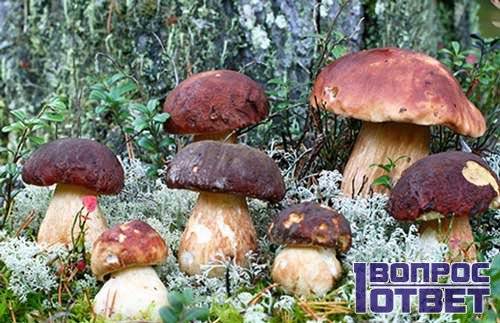

Close inspection
- this is a strictly necessary measure, because even edible mushrooms can be poisoned. Poisonous mushrooms are dangerous toxins, but edible mushrooms can grow next to busy sections of the tracks, collecting all the elements of the periodic table.And measures for pruning the fruiting body will not help, because heavy metals settle in the soil.
It is from this soil that the mycelium micelle receives nutrients, develops and gives rise to new fruit bodies. So don't be lazy move some distance from any highways
, on the permanent paths of mushroom pickers.
Mushroom time
How fast does a mushroom grow? The very first ones appear in April. First, a real morel grows, followed by a conical and morel cap. In May-June, the pitted lobe appears. This mushroom grows up to 10 cm in height.
These species of morels are considered conditionally edible, since raw these mushrooms are very poisonous. The poison in them is destroyed only after preliminary soaking and long boiling (about an hour). And it is best to boil them in this way even three times, draining and rinsing each time.
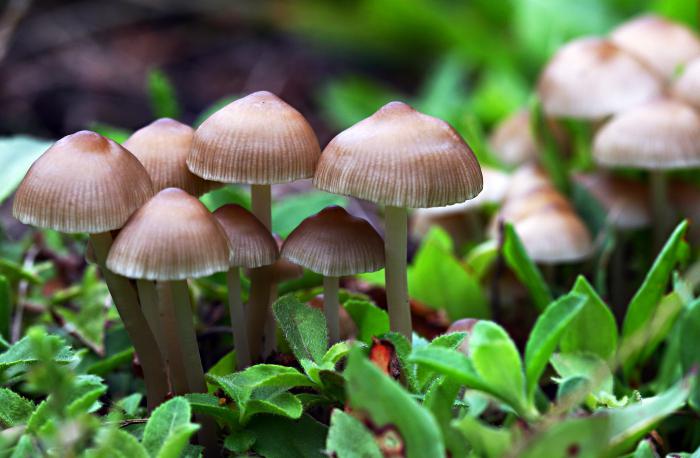

As a general rule, mushrooms begin to grow as soon as the soil thaws. But the real first ones are the spikelets, which begin to appear when the ears are sprinkled with bread. But often already in and May, boletus, white, chanterelles, aspen and boletus boletus appear in the forests.
In which forests do mushrooms usually grow
Mushrooms, of course, grow in the forest, but nevertheless, they can be found much more often on the edges, in small forests, on the outskirts, along the banks of ditches, rivers and streams. It is best to look at the entrance to the forest, not to go deep into it, but to walk along the edge, and preferably along the southern side.
There is an opinion that mushroom pickers do not examine the territory adjacent to the road only because they believe that everything has already been collected there and are trying to get away. Meanwhile, it is there that untouched myceliums are often found. Porcini mushrooms are very partial to cow paths. If cattle are usually driven along the edge, then it is there that you should look for them first. This type of mushroom was nicknamed "ladybug".
Basically, whites love spruce forests, although they often grow in pine forests. The best place for them is the outskirts of mixed forests.
But aspen mushrooms prefer young plantings of aspen and birch forest. Most of them are found on the slopes of streams, ditches and small rivers. In order to find mycelium, a large area of forest is not needed. Often, among three aspens and a pair of birches, you can stumble upon a whole family. And from only one mycelium they cut off up to 20 pieces.
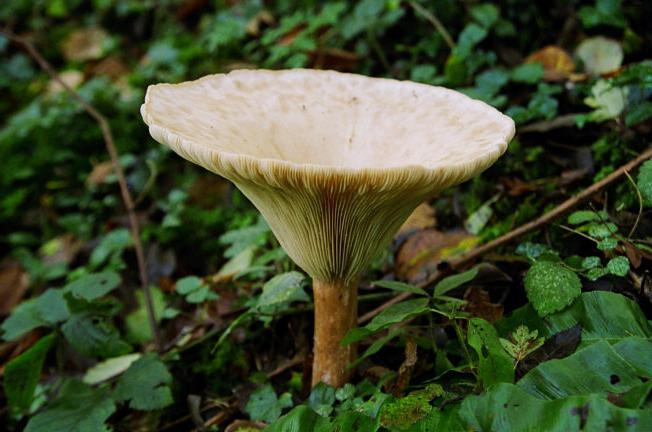

Boletus must be found where there are birch plantings. The ideal place for collection is light forest young plantings. It is here that the "king" of boletus grows - blackhead, which is considered the most delicious and beautiful. You can find it by a small dark hat, since the main part is completely surrounded by moss.
Ryzhiks and boletus mushrooms love coniferous forests, especially pine forests. Milk mushrooms, chanterelles, honey mushrooms and russula are generally unpretentious, and you can stumble upon them in any forest.
Rules and places for gathering after rain
Experienced mushroom pickers always follow the basic rules of mushroom picking:
- Do not take suspicious fruits into your basket.
- Collect only well-known species, otherwise there is a risk of confusing edible mushrooms with poisonous counterparts.
- Cut off the mushroom units with a knife, and do not break it with your hands, so as not to damage the mycelium.
- Do not harvest near roadways and industrial centers.
- Observe the intricacies of the technology for collecting and preparing certain types.
Each species has a different habitat preference. The following table summarizes the distribution areas of the most famous types of mushrooms.
| Species name | Distribution locations |
| White | Old deciduous and coniferous forests, mainly under oak trees |
| Valuy | Deciduous plantations |
| Volnushka | Coniferous stands, deciduous forests |
| Belyanka | Coniferous stands, deciduous forests |
| Bitter | Sunny forest glades |
| Lactose | Mixed forests |
| Raincoat | Floodplain forests, meadows, park areas |
| Greenfinch | Mixed type of forest plantation |
| Goat | Mixed landings |
| Cap | Sunny forest glades |
| Chanterelle | Deciduous and coniferous forest plantations |
| Oiler | Coniferous forest plantations |
| Mosswheel | Deciduous and coniferous forests |
| Honey mushroom | Dead deciduous trees |
| Boletus | Deciduous forests, mainly under birches |
| Boletus | Deciduous plantations, mainly under aspen trees |
| Ryzhik | Mixed type of forest plantation |
| Rowing | Forest edges, shrubs, parks and squares |
| Serushka | Floodplain forests |
| Violinist | Mixed plantings |
| Morel | Floodplain forests |
| Russula | Coniferous and deciduous forests |
| Champignon | Shrubs, roadside plantings |
You can harvest mushroom crops starting in May and ending with the first frosts.
Tips for mushroom pickers
Mushrooms have one unusual "tendency". They love high-voltage power lines that are stretched across forests. This feature is explained by the fact that, due to electric current, trees are constantly pruned, and this creates rather favorable conditions for growing mushrooms, since they constantly receive the necessary light and moisture.
Mushrooms in the forest can mainly be found in humid places - lowlands, as they grow much faster there. But it is definitely not worth looking for them in the swamps. You should also remember about the temperature, so in the southern regions the mushroom season begins earlier than in the northern ones.
What mushrooms can be planted and grown in the country
For growing in my dacha in the garden, I selected and tried to plant several types of the most famous mushrooms. I conducted experiments and planted champignons, oyster mushrooms, porcini mushrooms and champignons, in general, these forest mushrooms can grow well in their summer cottage:
1. Oyster mushrooms, these mushrooms are unpretentious in planting and caring for them, the main thing is the presence of a nutritious substrate and moisture. The mycelium bears fruit from early August to October. I collect about 500 grams of harvest from each bush. If you create favorable conditions for oyster mushrooms, they will bear fruit all year round. The mycelium does not need to be covered for the winter, it is not afraid of frosts. These are the easiest mushrooms to plant at their summer cottage - I can recommend starting with oyster mushrooms.
2. Morels appear in early spring. In southern Russia, crops can be harvested from April to May. They grow well on the remains of rotten apple leaves and fruits. The morel hat looks like a conical wasp hive, it is difficult to confuse it with other species.
3. Champignons are the most popular mushroom, it is a cultivated species that can grow under any garden tree, berry bushes. Spores and mycelium can be bought without much difficulty, and are even sold by online stores. Champignons love fertile soil, they grow well on compost heaps, they need moisture and shade.
4. Porcini mushrooms are noble beauties. The most difficult type of mushroom to grow in the country. It will take a lot of effort to start them, but it is a very interesting activity to get porcini mushrooms at your dacha. When they grew up with me, all the neighbors of summer residents came to see me like a miracle. To begin with, you will have to find a young pine tree in the forest, next to which the mycelium specifically boletus grows. The tree is dug up, and together with the mushroom soil layer is transferred to the dacha. If you have correctly found a healthy mycelium, then the success of the harvest in your garden will be.
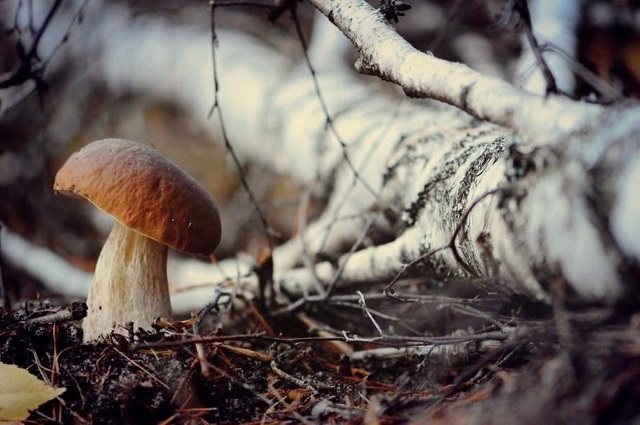

Porcini mushrooms are most difficult to grow in their summer cottage
Common types of woody mushrooms
The most famous tree mushrooms:
- a ram mushroom that can grow up to 20 kg;
- scaly tinder fungus;
- the tubular layer is white, edible, consumed young;
- winter tinder fungus, grows on deciduous trees;
- sulfur-yellow tinder fungus grows in deciduous forests, eaten by young people;
- birch tinder fungus, grows on birches, more often on dead ones, edible at a young age;
- fistulin grows on living deciduous trees and in oak hollows, edible;
- psatirella conlola grows on living trees and land, is edible;
- golden scaly grows in large groups on poplars and deciduous trees, is edible;
- oyster mushroom and common - both edible.
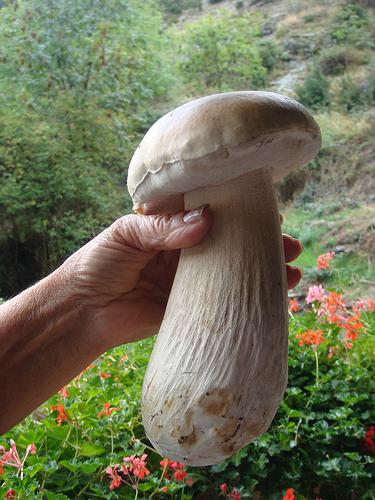

How to grow champignons
Almost everyone loves this type of mushroom, it is one of the most unpretentious, champignons have long been cultivated and bred for commercial purposes. I noticed that the mushrooms grown on the site are more tasty and aromatic than purchased ones. This is the same as with vegetables from the garden, their wonderful taste cannot be compared with store-bought ones. I grow champignon mushrooms in my small garden, they easily tolerate the neighborhood of fruit trees.
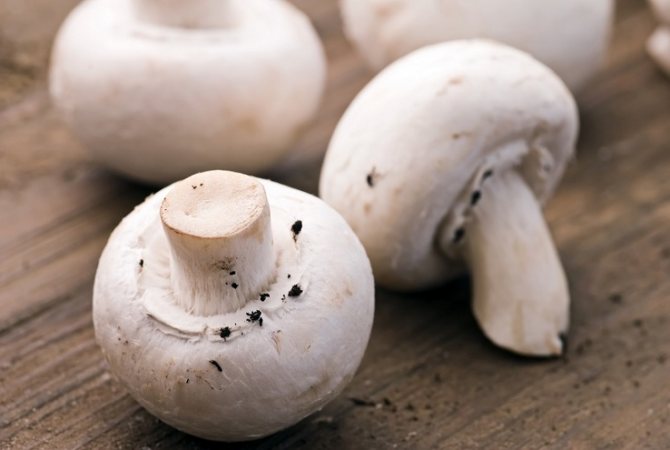

The easiest way to grow champignons in the country is
This mushroom culture needs a nutrient-rich substrate. I advise you to do it according to a simple recipe. To do this, you need to prepare: 1. mullein or horse manure - 25 kg; 2. gypsum - 6 kg; 3. lime - 6 kg; 4. straw - 10 kg.
I mix all the ingredients in a large barrel, then add food waste to the mixture. The composition can be mixed in a specially dug hole. Then cover the mixture with plastic wrap and leave for 20-25 days. After 3 weeks, a trench 25-30 cm deep is dug in a shaded place in the garden. The ditch is filled with a ready-made nutrient base, and watered abundantly. Mycelium is planted in it. Mushrooms are planted after the air temperature rises to + 20. In cool weather, I do not advise doing it, the whole development process will be disrupted, or it will be delayed.
My advice: I do not recommend bringing wild mushrooms from the forest for seedlings, some of their subspecies are not edible. Mushrooms grown with store-bought mycelium are guaranteed to be edible.
Champignons take root well in a new place. It happens that it is enough to do this - break a few well-ripened fresh mushrooms into small pieces and scatter on a well-moistened plot of land (it must be covered with a nutrient mixture). Young mushrooms will appear here in 2 months.
Truffle
Mushroom truffles are considered a delicacy that was available only to wealthy people. They belong to the genus of marsupials. Outwardly, they are rather unattractive, fleshy, grow tubers. And they can reach a mass up to 1 kg. Black-blue, smooth or cracking. Covered with small bumps resembling warts.
This mushroom has many species - almost a hundred, but of all, only three are considered the most valuable. It is winter, Perigord and Piedmont. To the conditions of the environment in which it grows, it is very demanding. So where do truffles (mushrooms) grow? They prefer mixed forests, but with a predominance of trees such as beech and oak. Despite this capricious behavior, they grow underground.
Truffle features
The mushroom tastes like fried seeds or walnuts. And after that it retains its taste for a long time. It is so bright that it is very difficult to describe it. In addition, it can be consumed even raw.
Truffles have many health benefits. It is very much appreciated for its high content of vitamins B1, B2, C, PP. It has a beneficial effect on the health of children, nursing mothers and pregnant women. Increases sexual desire. It has been proven to even delay the aging of human skin. Therefore, it is widely used in cosmetology. You can collect such mushrooms only by tearing the ground, but only pigs and dogs can feel where the mushroom grows, so a real mushroom hunt is conducted for these delicacies. Otherwise, it is simply impossible to collect them. These mushrooms grow strictly one at a time. They are collected only at night, since only at this time does it give off a smell.
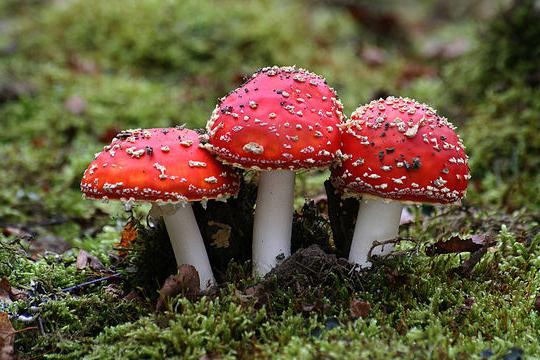

The truffle season is very short - from September to March. And in winter they can only be obtained in November or December. Most mushrooms are small, since large specimens are extremely rare.
Truffles even have their own shelf life: they can only be kept fresh for up to 3 days. And even so, it needs to be wrapped in paper and put in the refrigerator. It is also subject to freezing.But all these operations can be performed only with unwashed and unpeeled mushrooms.
Fly agarics
Amanita is a genus of lamellar mushrooms. And for the most part, it is very poisonous. There are almost 100 species. Grows in all forests. When mushrooms of all kinds begin to grow, then fly agarics also appear: from June to October. However, one must remember. Amanita muscariae red and smelly are deadly to humans, as they are very poisonous.
Fly agaric from the genus cap, rather large, fleshy. The young mushroom is wrapped in a blanket that breaks as it grows. The color is different, it can be not only red, but also gray. It multiplies by spores. By the way, when fly agarics grow, porcini mushrooms also appear.
In our forests, the most common red mushroom. When consumed by humans, it causes severe hallucinations. But there are also edible fly agarics. For example, Caesar pink. Red is used in the treatment of oncology, epilepsy and a number of other serious diseases.
Landing
You can plant mycelium from early spring to late summer, trying to shade the beds at high summer temperatures.
Important! Do not use chemical fertilizers, as mushrooms will not grow under these conditions.
The sequence of actions during landing can be represented as follows:
- Mushroom beds do not look like the usual areas for vegetables - this is not a hill, but depressions (30 cm), lined with a drainage layer, on top of which the substrate is placed and compacted.
- Plant mycelium evenly, spreading it over the entire surface of the compost, and then sprinkle with water. Try to make an even layer on the substrate so that fungi grow in all parts of the soil.
- Sprinkle on top of the bed with a coating mixture from a set or peat mixed with chalk in a 4: 1 ratio, with a layer of 2-3 cm. Instead of peat, you can use garden soil or crushed waste paper, but be sure to add chalk or dolomite chips to ensure the alkaline characteristics of the composition.
- The period of active growth takes about 2–3 weeks. During this time, the substrate will be colonized with white mycelium filaments to a depth of 1 cm.
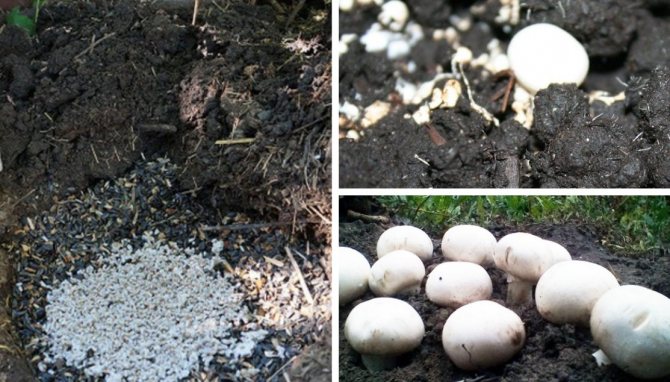

To activate growth and fruiting, faster ripening of fruit bodies and improve their quality, it is recommended to process the substrate with mycelium with Epin (0.005 ml / m²) before planting and at the beginning of each fruiting wave. This ensures earlier fruit formation (by 4-6 days) and increases the yield by 20%.

